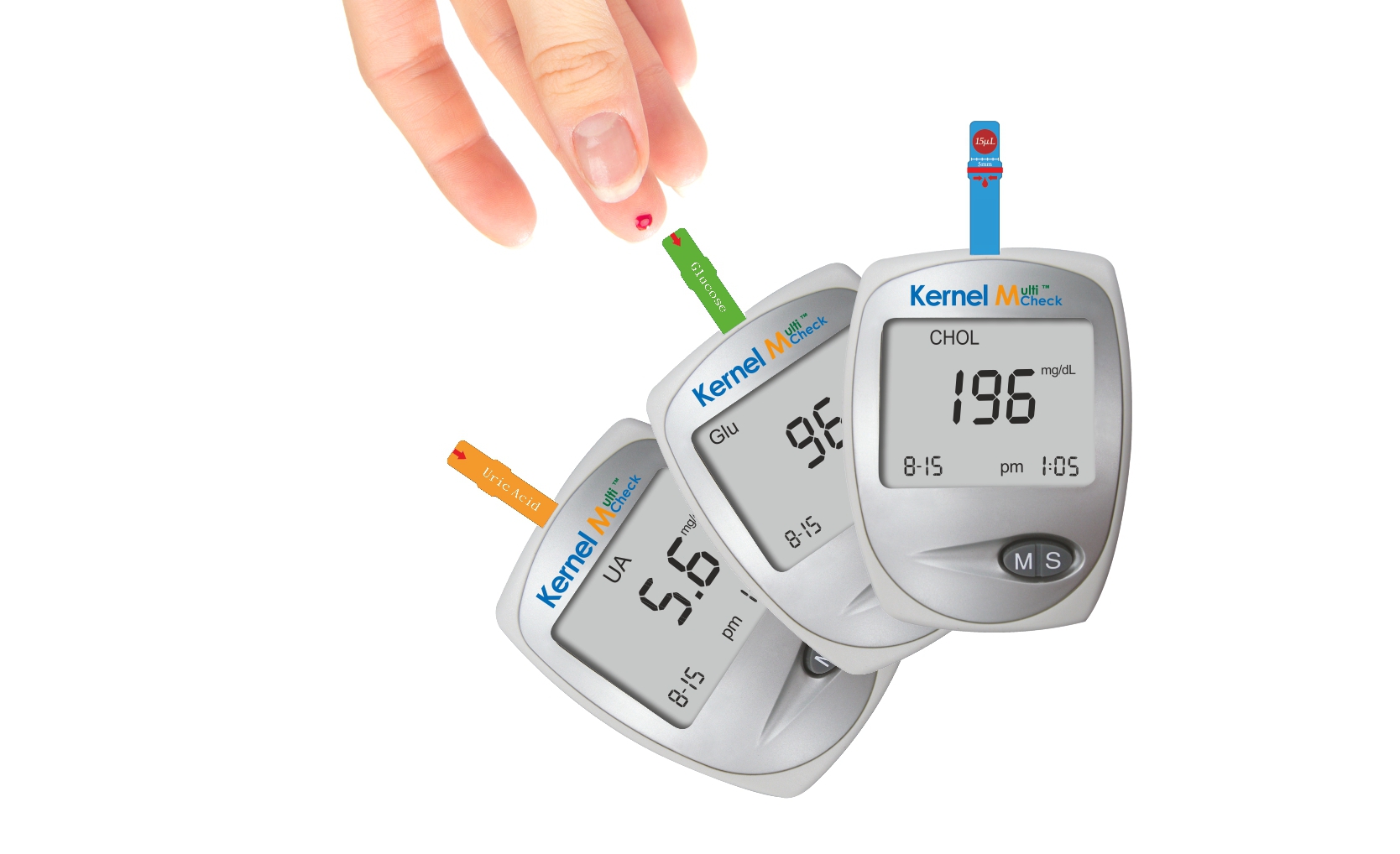
Blood glucose,Cholesterol and Uic Acid meter kit(ET-301)
The device can be used for measuring glucose and cholesterol and uric acid .
Features:
| ET-301 | Glucose | Cholesterol | Uric Acid |
| Measuring Range | 20-600 mg/dl | 100-400 mg/dl | 3-20mg/dl |
| memory | 200 | 50 | 50 |
| Test Time | 6 | 150 | 6 |
| Battery Life | More than 1000 Times | ||
What is Uric Acid and Do you know what an increase in uric acid that could indicate what illness?
Uric acid is a byproduct of the decomposition of the nucleus acids.Uric acid is made mainly in the liver and intestines and is excreted by the kidney (two-thirds disposal) and bowel (about a third). Hyperuricemia is an excess of uric acid in the blood. Uric acid passes through the liver, and enters your bloodstream. Most of it is excreted (removed from your body) in your urine, or passes through your intestines to regulate "normal" levels.
Normal Uric acid levels are 2.4-6.0 mg/dL (female) and 3.4-7.0 mg/dL (male). Normal values will vary from laboratory to laboratory.
Primary hyperuricemia:
Increased production of uric acid from purine Your kidneys cannot get rid of the uric acid in your blood, resulting in high levels
Secondary hyperuricemia:
Certain cancers, or chemotherapy agents may cause an increased turnover rate of cell death. This is usually due to chemotherapy, but high uric acid levels can occur before chemotherapy is administered. After chemotherapy, there is often a rapid amount of cellular destruction, and tumor lysis syndrome may occur. You may be at risk for tumor lysis syndrome if you receive chemotherapy for certain types of leukemia, lymphoma, or multiple myeloma, if there is a large amount of disease present. Kidney disease - this may cause you to not be able to clear the uric acid out of your system, thus causing hyperuricemia. Medications - can cause increased levels of uric acid in the blood Endocrine or metabolic conditions -certain forms of diabetes, or acidosis can cause hyperuricemia Elevated uric acid levels may produce kidney problems, or none at all. People may live many years with elevated uric acid levels, and they do not develop gout or gouty arthritis (arthritis means "joint inflammation"). Only about 20% of people with elevated uric acid levels ever develop gout, and some people with gout do not have significantly elevated uric acid levels in their blood.
Foods that are high in purine include:
All organ meats (such as liver), meat extracts and gravy
Yeasts, and yeast extracts (such as beer, and alcoholic beverages)
Asparagus, spinach, beans, peas, lentils, oatmeal, cauliflower and mushrooms
